Chatbots are becoming a crucial tool for B2B businesses looking to streamline their operations. Chatbots can automate lead generation, improve customer service, create more personalized experiences within your buyer journey, and ultimately boost revenue.
But this is provided you create a chatbot that meets all of the expectations of your website visitors—in particular, fast and relevant responses. In fact, a report published by 99Firms shows that 79% of users opt for live chats because of a faster response.
These fast responses are pre-fed and triggered depending on what is typed into the bot. In this post, I’m going to walk you through designing a chatbot conversation that meets your customers’ needs. I will help you to:
- Identify the purpose of your bot.
- Map out your conversions according to the seven elements of conversation.
- Choose the best-fitting closing statements
I’ll also provide best practices and real examples to give you extra guidance and inspiration.
3 steps to building an ideal chatbot for your brand
First off, whoever said live chat or chatbots are only for customer service…this couldn’t be further from the truth! Whether you’re building a chatbot for a digital marketing agency, a hair salon, or an online dropshipping business, they can be used for marketing, sales, customer support, and the list goes on. Here are the basics for building out a chatbot for your business.
Step 1: Decide the purpose of your chatbot
A large chunk of your target buyers will not sign up in the first go. They are likely not even looking to talk to you face-to-face or over a call, or book a demo. In fact, most of these visitors will leave without doing anything. This puts your average conversion rate with forms, emails, and paid ads at something like 2-3%.
Rather than driving all attention to capturing lead profiles, use a customized live chat to engage new visitors, and through these conversations, they will willingly supply you with their profile information. This means that you need to determine the functions you want your bot to perform. For instance, let’s say I am building Kiki, a chatbot for my cloud integration platform. Kiki has three major duties:
- Monitor each new visitor and returning users.
- Promptly ask what they are looking for.
- Help in scheduling demos or looking up a feature.
Knowing Kiki’s primary purpose, here’s how my initial conversation flow will look:
Let’s look at a practical implementation now. This is how the chatbot on MobileMonkey converses with a new visitor. Here’s the starting point:
The next step asked for my email address, which I provided. Then it gave a brief of what MobileMonkey does and asks if you’d like to connect with them over SMS. You get two options—Connect on SMS or No Thanks. I tried using both to see where it leads. With the first option, it asks for your phone number.
For the second option, it will yet again ask if it can follow up on SMS. Here, I picked No.
Here, the chatbot quickly wrapped up this part of the conversation but not without bringing a few useful resources to potentially keep my attention.
Our conclusion? The MobileMonkey chatbot fairly does its task of capturing new lead details. They now have my name and my email address. Also based on my choices, they have already segmented me into one of their related segments. I won’t be surprised to see some nurturing emails soon in my inbox.
In live chats, responses are short and crisp. If your chatbot is overloading information, it will turn off the customer. Remember, the attention span of a human is less than that of a goldfish! Also, your customers opted for a live chat because they want a *quick”* response to *quickly* solve the matter. Any unwanted information will spoil it.
Step 2: Incorporate the elements of conversation
If you take a closer look at the chat flow above, you will see that a chat conversation has seven specific elements. Not just in this conversation flow, but every chatbot conversation you design will have these elements.
1. Greetings: This is used to start your conversation. The level of formality will depend on whether you are a returning user or a new visitor. For instance, in the case of MobileMonkey above, I was a new visitor. It is evident from the chat conversation. What happens post subscribing? Look at how conversations begin here. It doesn’t need to capture any details about my profile. Very informal greetings, waiting right inside my Facebook Messenger.
2. Questions: To engage or to acquire information, the chatbot must ask questions to keep the conversation going. For instance, if you are talking to the AccuWeather bot on Facebook, it will keep asking you questions for you to provide an answer. There is no in-between here.
3. Information: This is over to the user. The user is supposed to enter information that is either requested or important for the conversation to proceed.
4. Verification: This is where the bot clarifies information and tests the understanding of the user.
5. Errors: Some conversations may lead up to a point where the chatbot is unable to find an answer or fulfil the user’s request.
6. Apologies: If the chatbot fails to give relevant answers, it politely acknowledges its failures and attempts to serve as a bridge to alternative solutions.
7. Suggestions: The chatbot offers the user with relevant actions or options to get started from there.
8. Conclusions: This marks a clear end to the conversation.
Apart from this, there is also a visual element that cannot be ruled out. Using GIFs, images, emojis, and videos can be a great way to keep the engagement going. Consider understanding your social users’ intent or what we call ‘social listening’ to draft relevant automated responses.
Step 3: Start testing your conversation
Remember how your teacher would ask you to read your lessons out loud? It is said that hearing what you are reading helps you spot errors faster. The same rule applies to creating perfect chatbot conversations. When you start testing your conversation flow, you start pointing out errors that need fixing.
Pro-tip: Try doing this with a partner who has no clue about your chatbot. This is an effective method because a neutral pair of eyes can give you better feedback. You already have a picture of what or how your chatbot will speak. Having neutral judgment helps in such cases.
You can use several chatbot builder tools like Tidio or Hello Tars to test your conversation. I tried my hands at creating a chatbot conversation workflow on Tidio using one of their ready-made templates.
You can build your own chatbot (with zero coding skills). You can simply copy their JavaScript code and paste it on your website to get your chat widget. As for customizations, that is seriously taken care of. Check out my version of Kiki for a B2B eCommerce platform.
In this chatbot example, the purpose of the chatbot was to help visitors to look for an item or category.
Pro Tip: Crafting your monologue and parts of a dialog based on the target segment driving most sales/traffic is a great place to start optimization. For example: Having a friendly tone with new-age jargon has done well for many businesses when marketing to millennials or Gen X.
Step 4: Choose the right words to end your conversation
You may think there is no point in wasting time over deciding what your chatbot says before the chat ends. You’re wrong! A warm goodbye message seals the deal for you. You’ll earn the trust of your user by giving out relevant solutions to their problems and being nice to them throughout.
Why must you have an ending? Because you are doing everything in your power to make the conversation as human as possible. A real conversation with a human will always have an ending—a goodbye. So spend some time on how you want to end your conversation. Adobe often asks for feedback or says they will call back. In this instance, it is feedback, but only after a cordial ending statement—”You are welcome. Hope this helps.”
Some alternatives you can try:
- Glad I could help. I’ll be around if you need me.
- Give me a shoutout if you need anything else.
For Kiki, I tried using a GIF with my ending message. It kinda looked nice (just saying).

Such phrases give closure. Don’t just leave your users hanging. Remember, it is a full cycle.
Your conversation has come to a full cycle. Now, it’s time to get started with building a real conversation. While you are at it, here are some practices you must keep in mind with your chatbot conversation.
Best practices to implement when building a chatbot conversation
- Give your chatbot a personality. Conjure up a fictional character with a name, a sketch, or a cartoon or icon that resembles your brand. Give it a personality. This is exactly what will make your chatbot and your brand more human-like.
- Integrate your chatbot with other services you use. For instance, if you are using LiveChat to build your chatbot and have Slack for your team collaborations, you can consider integrating LiveChat and Slack to keep lead capturing, profiling, and handling in sync.
- Reduce the wait time when a new user pings on your live chat. In other words, be quick to respond. For example, in Netflix, you will see a notification like “Your wait time is 1 minute”. However, it has never escalated to one minute. The response comes in about a few seconds’ time.
- Train your chatbot to read subject lines carefully. Sometimes people end up writing the query in the subject line itself.
- Handle complicated queries as several smaller ones. This will ensure everything gets resolved.
- Test, test, and test. Refine your chatbot to perfection.
- Follow the trends. Be up to date with what’s happening, who’s doing what, and how. The chatbot world is evolving, and how. Make sure you keep your eyes and ears open and avoid making common conversation errors.
Chatbot tools and use cases to take inspiration from
Believe it or not, chatbots have already been introduced to different sectors of work over the past few years. While some chatbots are specifically built to understand user queries and deal with critical data, others are developed just to make the time of the user merry and offer simple solutions. Below are some great examples of various sites using chatbots to enrich the operations for the site and the experience for its users.
1. LiveChat for AWeber
AWeber is a global email campaign company that lets its users initiate high scale email propositions around the world. To carry on with their business, AWeber was using email and phone calls but soon realized it was becoming cumbersome and their need for another source of communication was inevitable. Since AWeber itself claims to offer 24/7 support and world-class delivery, staying at the top notch of the game was crucial for them.
In came LiveChat for AWeber. LiveChat is a simple and easy chatbot solution for B2B business owners that completes their customer journeys more efficiently and fuels their sales. Thanks to LiveChat, AWeber can now deliver the best-in-class 24/7 live chat support to all its uses around the world. Also, it is with the help of LiveChat implementation that the team members now engage with new prospects as well as keep a keen eye on the existing customers.
According to the Director of Customer Solutions at AWeber, Mr. Chris Henrich, “None of the platforms we looked at offered as intuitive a user experience that LiveChat does.”
LiveChat reports help agents to analyze their performance for customer service and satisfaction. Visitor tracking offers to gather customer trends and data from people on the website. This feature helps AWeber in better understanding what the customer wants and how to provide customer service in a more efficient way.
2. Intercom for SalesLoft
Intercom, claiming to be one of the best business chatbot tools in the market, makes use of conversational AI to deliver the best-in-class experiences to its users. One of their leading clients is SalesLoft, which deals with making deals and conversions over calls and emails. With InterCom implementation, SalesLoft now has an 8X increase in demo call requests over chat support. With features like better lead tracking, rich and intuitive messenger, and robust targeting capabilities, InterCom provides an out-of-the-box personal chat experience that drives more revenue through the sales funnel.
According to Kevin O’Malley, VP Marketing at SalesLoft, “InterCom lets us identify and prioritize prospects that arrive from the website more efficiently. We can make a personal connection and an impactful experience that sets us apart.”
SalesLoft has efficiently managed to leverage the advantages of InterCom with features including huge chat window customizations, teammate profiling and the removal of pre-chat forms. Also, since InterCom possesses the ability to respond to and send proactive messages based on a customer’s browsing history, SalesLoft was sure that it could deliver a more relevant and accurate message to customers in a more timely manner. Due to this implementation, SalesLoft has witnessed a 40% rise in appointments booked through live chat support. This, in turn, has increased the initial personal communication and the value of live chat acquisition by reaching more viewers and prospects.
3. Zoho SalesIQ for HumanOurce
Another great example of a stunning and robust chatbot tool that does much of the initial legwork with amazing customer support is Zoho SalesIQ. It is a hassle-free chat support system that caters to customers globally. It is recommended as one of the best live chat tools for growing businesses with features like analytics reporting, visitor tracking, and lead generation. Among all its other clients, HumanOurce, an HR consulting firm, is one of the finest examples of how businesses can employ Zoho SalesIQ and streamline customer engagement and lead generation together.
Apart from providing accurate customer reports, analytical insights, and speeding up the sales funnel processes, Zoho SalesIQ also offers integrated engagement with Zoho CRM, anytime-anywhere support, faster conversions, and real-time lead scoring. Also, one of the best things about Zoho SalesIQ is that it does not need any technical expertise or the need for coding—hence it is extremely easy to get used to and offers a much more intuitive experience than anything else.
According to Mr. Prabhanshu Tripathi, Co-founder at HumanOurce, “Zoho SalesIQ is a must-have tool for any business in today’s digital world… With Zoho SalesIQ, we were able to interact with our website visitors, understand what they were looking for and explain how we can assist them.”
Build an ideal chatbot for your brand with these tips
With the growing use of chatbots in the B2B industry, organizations can now think of new ways to leverage it and offer unparalleled customer experience to their users; and even generate quality leads much easier and more efficiently. Key takeaways from this post include:
- Incorporate the elements of conversation into your chatbot: greeting, questions, information, verification, errors, apologies, suggestions, and conclusions.
- Test your conversation multiple times to identify errors in the flow.
- Give your chatbot a personality. The bot doesn’t have to appear to be human—embrace the fact that it’s a bot—but there are ways to incorporate your brand voice into the bot to help create a coherent experience for your customers and visitors.
- Integrate the chatbot with other marketing automation platforms you currently use.
- Be sure to follow additional practices such as keeping wait/response time to a minimum, breaking complicated queries into smaller ones, aligning with trends, and (again) test, test, test.
It is about solving problems and engaging users on a personal level. Crisp and straightforward language is what you need to connect with your users. Just say what you must say—but with a little love and empathy.
About the author
Pritha is the Senior Content Marketer at Automate.io. She works with global brands to drive organic growth and brand visibility. She writes on business & sales automation, consumer marketing, advertisement, and social media marketing, and has successfully contributed to G2Crowd, Martech Advisor, JeffBullas, Smart Insights, and more.

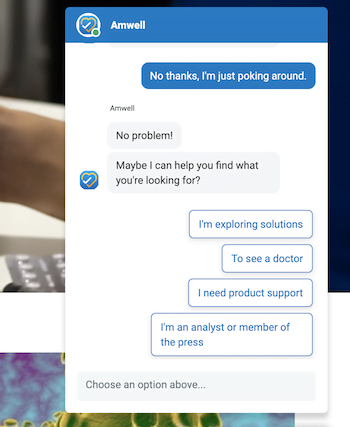
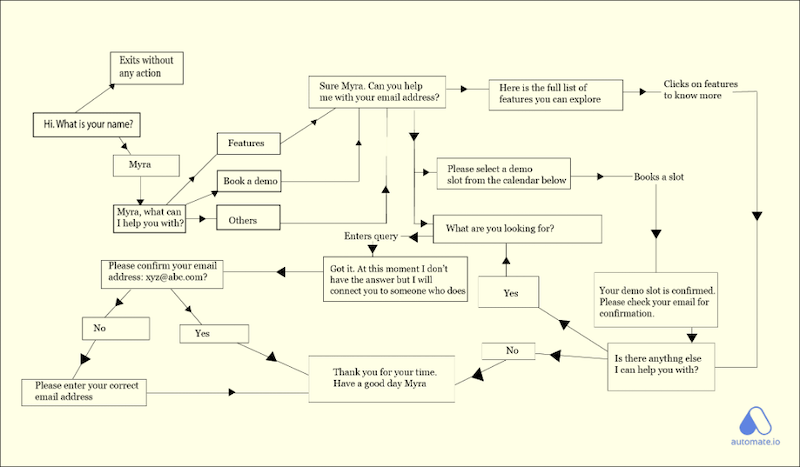
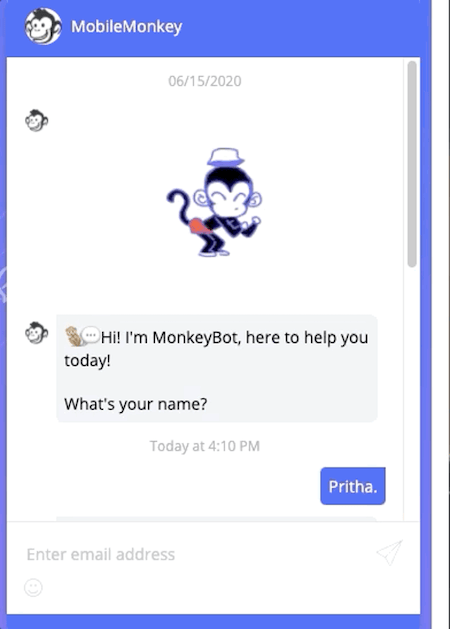
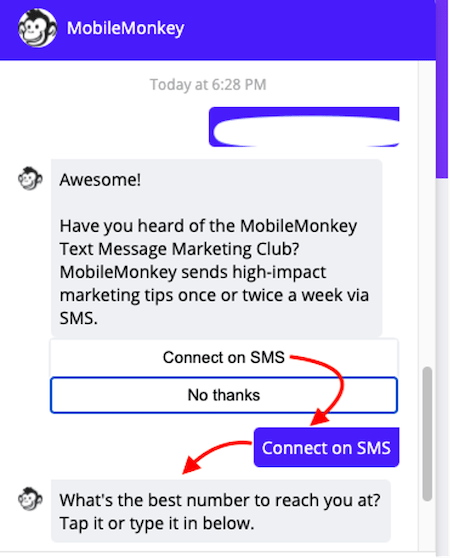

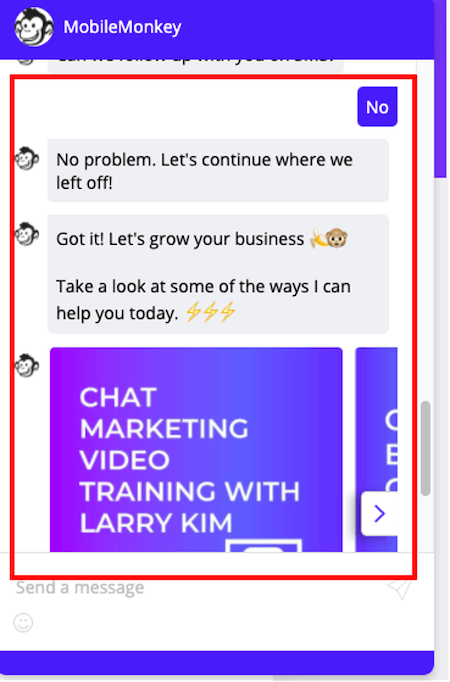
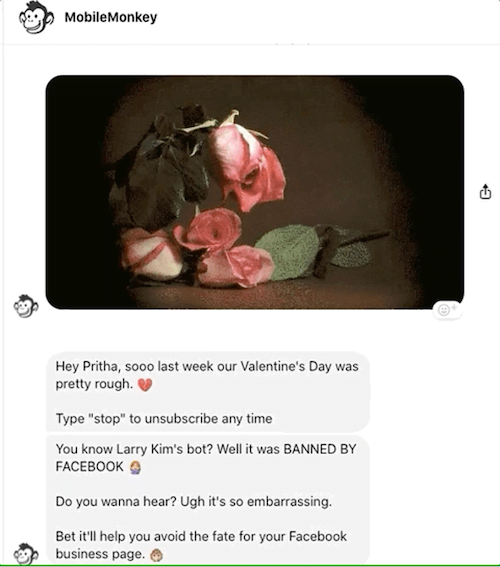
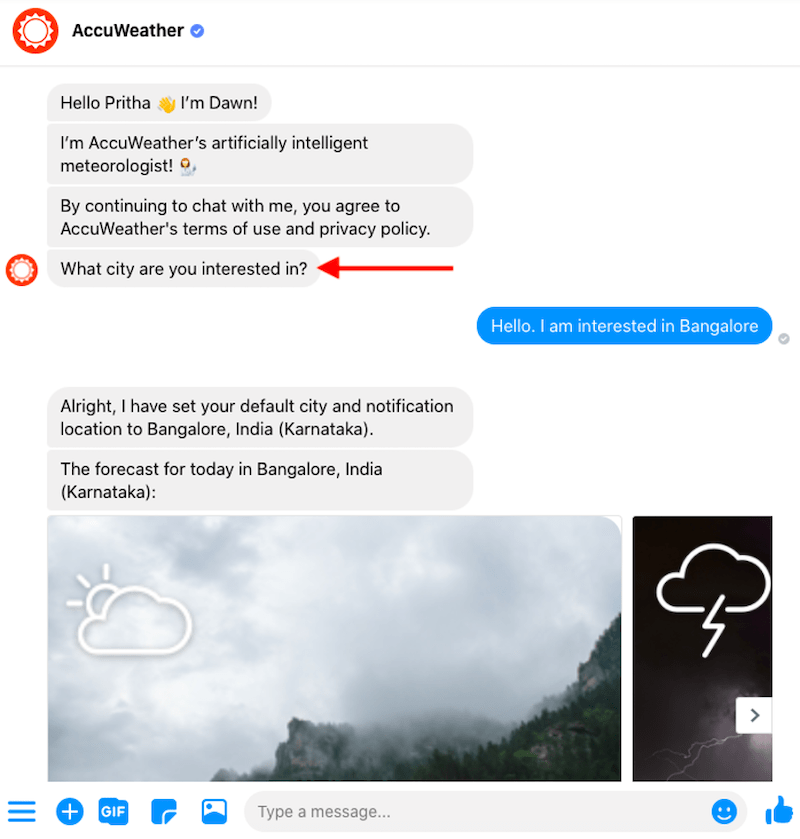



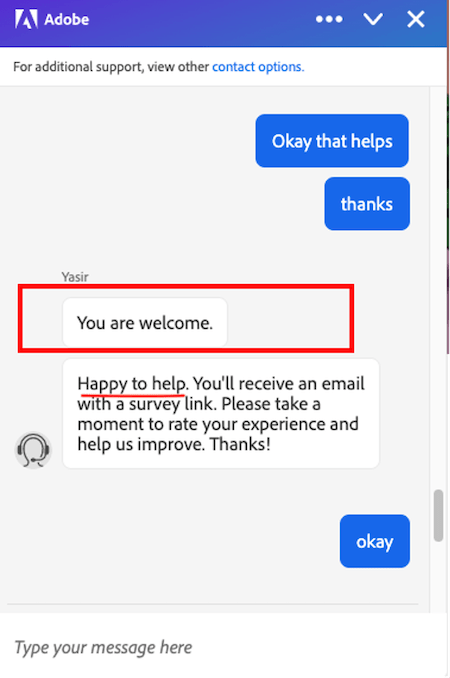

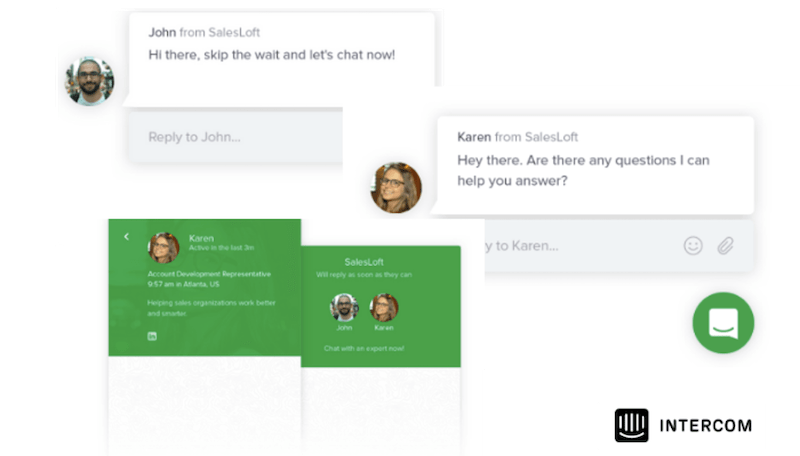
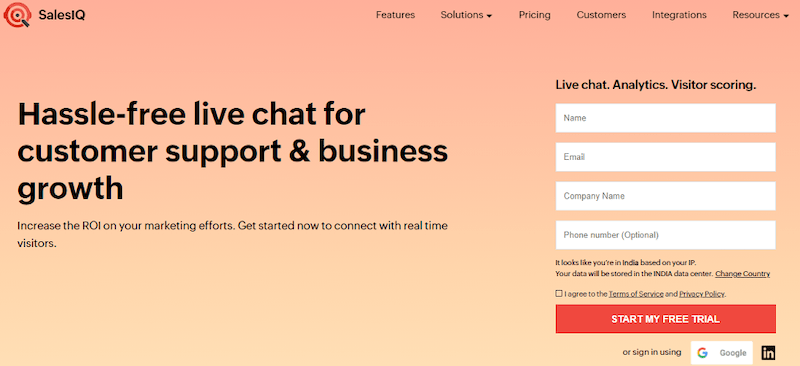

0 Comments